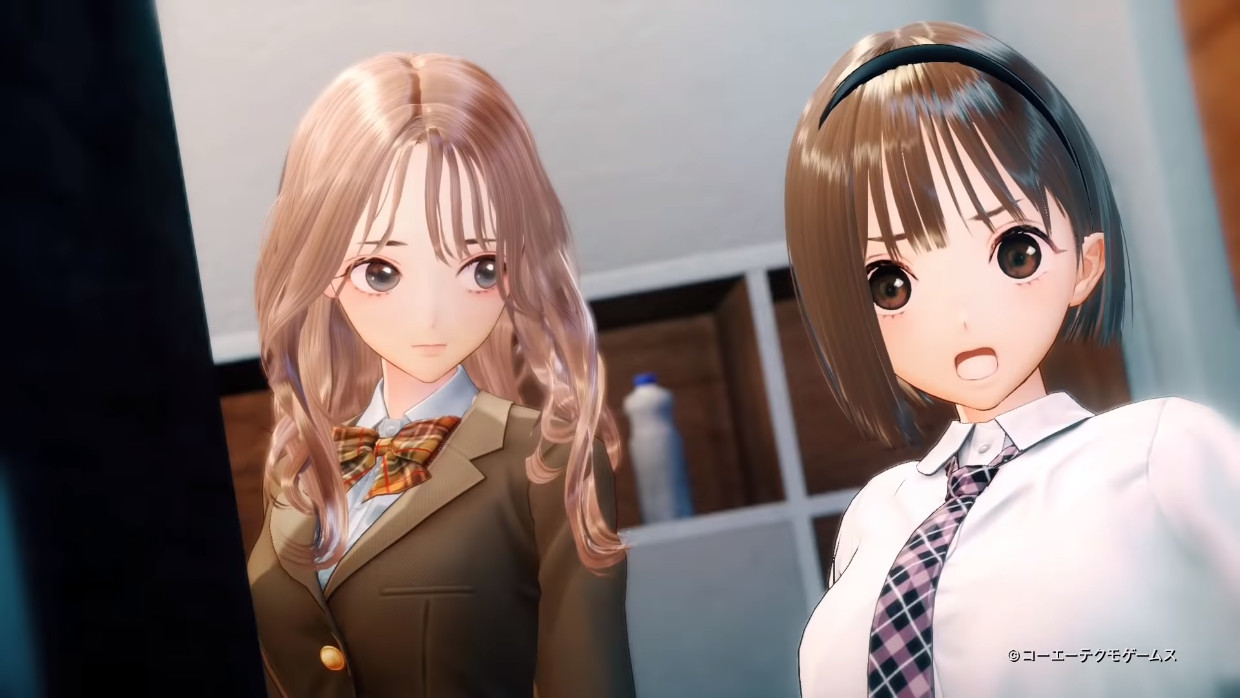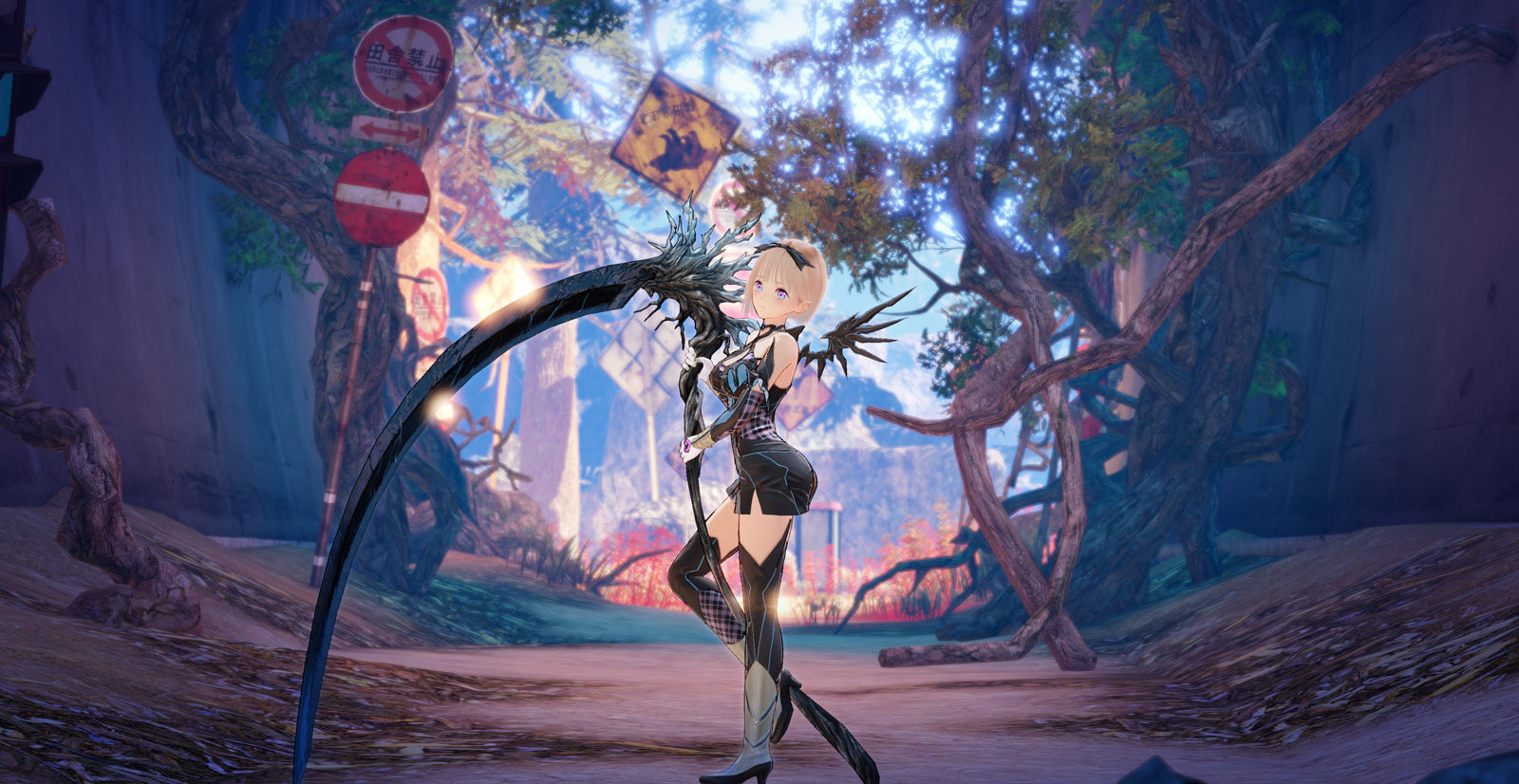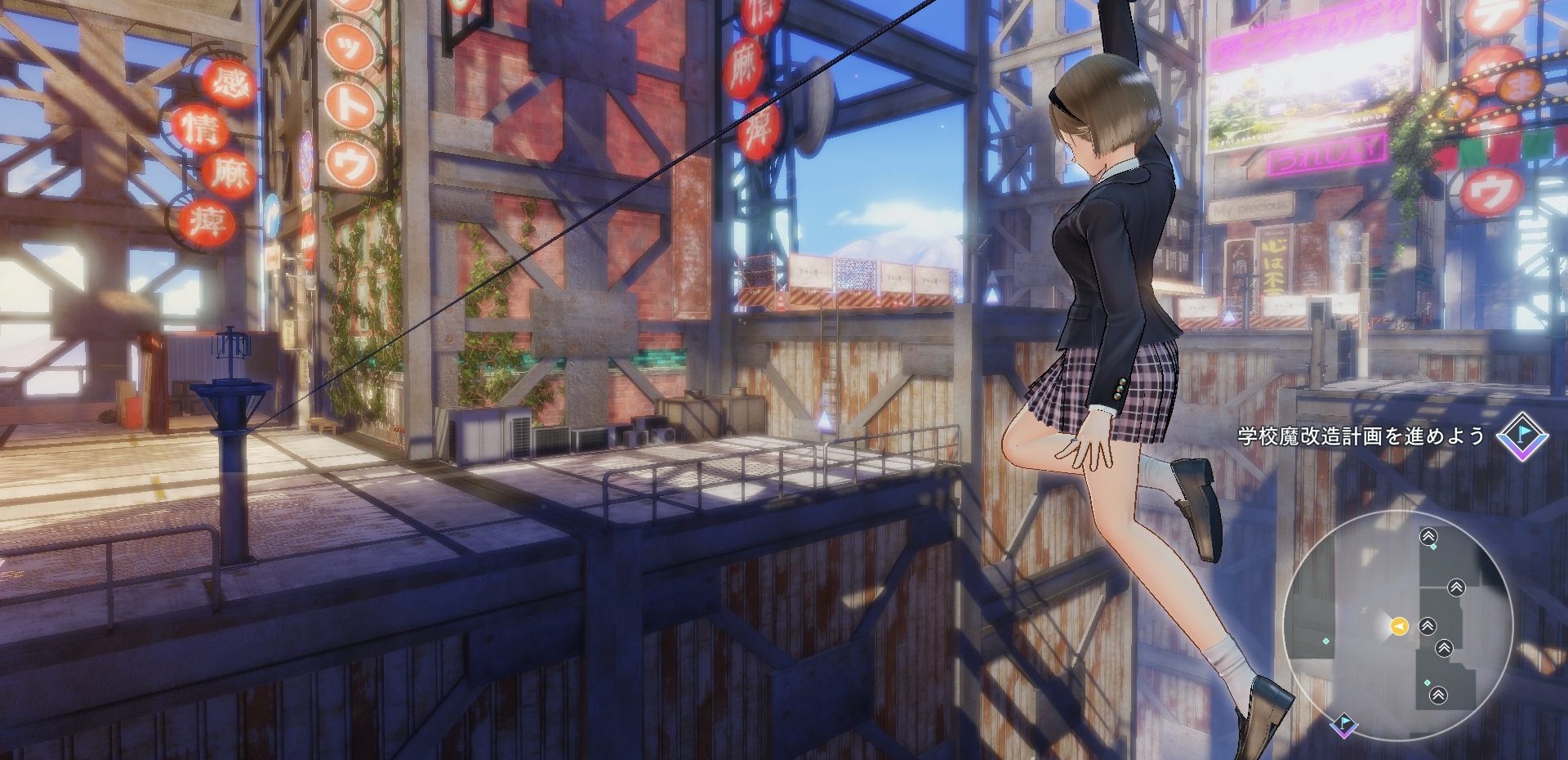Platforms:
PS4, PC, Nintendo Switch
Released:
November 9, 2021
Publisher:
Koei Tecmo
Developer:
Gust
Blue Reflection: Second Light is the sequel to the 2017 JRPG Blue Reflection, developed by Gust and published by Koei Tecmo. Despite being a sequel and having a spin-off anime series that aired in 2021, Second Light is mostly a standalone experience, with a new set of characters, a new story, and only slight references to the original.
Second Light sees you playing as Ao Hoshizaki, a Japanese high schooler who one day awakes in an abandoned school in a different world alongside a host of companions. Initially, these companions are the soft and open-hearted Kokoro Utsubo, the calm and diligent Rena Miyauchi, and the positive energy of the group coming from Yuki Kinjou. We learn early on that the characters have lost most of their memories upon arriving in the world, and it’s only when Ao arrives that the group is able to start working on regaining their memories and trying to return home.
“Second Light aims to create a JRPG experience that is both fast and slow. It is these contradicting forces that make the game refreshing yet sometimes frustrating”
In many ways, Second Light aims to create a JRPG experience that is both fast and slow. It is these contradicting forces that make the game refreshing yet sometimes frustrating. Many JRPGs open slowly, but Second Light’s pacing is borderline snail-like to begin with—both the introductory gameplay and storytelling experiences are sluggish. There’s a strong reliance on fetch quests (a staple of the genre, to be sure), only contrasted by widely disliked stealth quests, and the initial demon encounters are easy to the point of being tedious, despite the game’s interesting time-based combat system.
The story is strangely non-linear and there’s an irritating reliance on flashbacks. A particularly egregious example is that we learn one of the characters, Yuki, is unable to use powers like the rest of her companions. But this isn’t just told to us, we learn it, and then we’re treated immediately to a flashback of Yuki being unable to use her powers. Cutscenes are administered so frequently that the agency of the player is undermined and the game shifts into almost visual novel territory. We walk through the school and initiate a dialogue cutscene, before walking to another point in the school to initiate another dialogue cutscene, before walking to another. You get the point.
For the most part, what pulls the player onwards is the intriguing storyline and the anime-style characters, written to be endearing and idealistic. But the starting point of the game seems strange from a narrative sense as well. Wouldn’t it be more intriguing to begin at the point where Ao is transported to the other world? Instead, the story begins a few days afterwards, with a lot of the occurrences of the first few days shown via flashback. It seems to be perhaps one of the worst ways to handle the opening sequence of events. Wouldn’t it be more intriguing to experience the events of the game chronologically? Wouldn’t it be more engaging to have our perspective aligned with Ao’s, to experience the jarring transition of walking to school, opening the door to our classroom and realising we’ve been transported to an entirely different world?
The game also leaves a substantial amount of exposition to ReSource, a strange AI that talks to the girls through a mysterious app on their phones: FreeSpace. But ReSource falls short of being a Pokédex or a Navi and instead functions as a way to drip feed the game’s revelations to the player. But again, this seems to be in fact the clunkiest possible way to handle the mystery of the game. Rather than deducing that the demons that they’re fighting are embodiments of their own emotions and struggles, the protagonists are simply told by ReSource. Rather than realising that the Heartscapes they venture out into are representations of their own memories and experiences, again they’re told by ReSource. Gust clearly has the instincts to know how to craft a captivating plot, and the sense to slowly feed the player information to keep them hungry, but the way they manage these things is at times incredibly clumsy.

Once you make it through the jumbled first chapter of the game, Blue Reflection: Second Light largely seems to find its rhythm.
Rather than the combat grinding that is a staple of most JRPGs, character attributes and abilities can mostly be enhanced through Talent Points, which are obtainable through interacting with characters, completing quests for them, or going on dates with them. This shift in focus aligns the gameplay with the story’s themes of bonding, the making of memories, and home. Though the systems are rudimentary, there’s something undeniably charming about the characters cooking food together, crafting new installations for the school, and just hanging out. And once Second Light’s focus is clear, the rest of the game feels improved. Exploring or slaying enemies to find materials for crafting is less tedious knowing that it doesn’t serve a typical JRPG purpose.
The game makes significant efforts to tie its more ‘slice of life’ activities to the battling experience. Aside from the effects of Talent Points, instalments built in the school often carry powerful combat bonuses—not only does the Beachside Café prove to be a cute date spot for the characters, it also increases your attack by 10%. Bonding events can also reward you with powerful Fragments which are equipables that give party members buffs. Food is also an important mechanism by which you can boost the combat power of your party during key moments.

As for the game’s combat, thankfully, team compositions are relatively flexible. There is an attack typing mechanic which isn’t quite as clearly defined as in games like Shin Megami Tensei or even Pokémon. On the one hand, this means that the characters you invest time into will most likely be able to find their uses in combat—though the game makes sure to present all the characters in an equally appealing light, so I didn’t really develop favourites (I’m sure most players will though). On the other hand, this means that the game’s sense of strategy doesn’t run quite as deep.
“The combat itself is an interesting twist away from the standard turn-based JRPG systems”
The combat itself is an interesting twist away from the standard turn-based JRPG systems. Order of combat is determined by a timeline at the bottom of the screen. Characters move along the timeline as they generate Ether (the game’s mana/energy) at set rates and return to the beginning as they spend it to use combat abilities. Using abilities also speeds up your ether generation, eventually triggering a gear shift for the character. On reaching the third gear, your character will transform—magical girl style—into their Reflector form, unlocking stronger versions of their moves as well as separate more powerful moves. There’s also a combo system that rewards continuous attacking, meaning that your attacks will become faster and more powerful as combat draws on. Certain attacks (based on typing) can also delay or stun enemies who are themselves moving along the same action timeline. In practice this means that a well-timed attack can completely prevent an enemy from damaging you for a decent chunk of the battle.
During certain battles, there’s also the opportunity to trigger one-on-ones. In these events, one of your characters can face off against the opposing demon in a timing-based battle system, using timed attacks, dodges, and counters to try and best them in a more ‘real time’ style sequence. Despite the enticing speed of combat, the aforementioned strategic elements are where it feels underdeveloped. The list of moves worth using is relatively small, and the lack of a finite mana resource means spamming your preferred move for the particular fight is generally all that’s required. Most of the time I found myself using moves as soon as they were available to continue to build combo points and therefore damage, rather than holding Ether to try and counter an enemy attack.
While intriguing, the one-on-ones during combat often feel jarring alongside the regular flow of battle. Part of the appeal of Second Light is that the pace of the combat is constantly increasing. Combo points and Ether speeds build, and the time-based system means that the usual turn-based monotony of queuing character actions is broken up, and instead the combat experience succeeds in feeling like the cast of characters is working together. But this is all distracted from by the one-on-ones, which also don’t make much sense in the context of the game itself. Why would the characters let one of their friends face off against an enemy on their own? While cool, the system doesn’t feel cohesive, especially considering the risk. A failed one-on-one frustratingly results in a KO’d character, leaving you at a huge disadvantage for the rest of the fight. It’s a strangely isolating and separate experience.

Blue Reflection: Second Light has an unfortunate habit of feeling fun but unpolished. Exploration, for example, involves balancing acts, rope climbing, crawling, and stealth. Stealth is the most developed of the challenges but even then, there are moments where the enemies’ indicators are inaccurate or unclear. The other movements are purely aesthetic with crawling, in particular, seeming to exist primarily to give players different angles to view the characters lewd alternative costumes (predictable fan-servicey skimpy uniforms or swimsuits). The rewards are also strangely inconsistent, maps are littered with random materials for crafting and cooking, and the most intriguing content, memory fragments, are generally limited to what is required for the main quest.
“Blue Reflection: Second Light has an unfortunate habit of feeling fun but unpolished”
Crafting is enjoyable, but bare bones. There’s no real logic to where or how you find particular items (which are often just represented as orbs in the overworld), and crafting just… doesn’t quite make sense. Magical girls they may be, but manifesting random props and installations out of thin air to be placed in overtly grid-oriented lots is perhaps a little too much. This is not to say that the exploration and crafting elements should be scrapped, or even that they have a detrimental effect on the immersiveness of the game, but rather that it feels like there was a lack of attention given to how to link the various features together.
Imagine that the story was structured in a way that the characters slowly come to the realisation that the Heartscapes they explore are manifestations of their own internal selves. With this realisation, perhaps they begin to wonder whether they can channel themselves into the school, except by focusing on happy memories and feelings. Now, instead of accumulating random junk like sand or old rags that are somehow meant to believably be ‘crafted’ into something like a drink stand or a set of sunbathing chairs, they accumulate desire fragments (which, mind you, make much more sense as glowy orbs) that they can use, perhaps with the help of their companions, to manifest new structures around the school. Instead of being placed randomly along a row of building lots, maybe these structures would pop up in exciting locations and connect with the school in a meaningful way. A drink stand would bring with it advertisements on notice boards, a set of study chairs might bring with it a list of the students’ grades, and so on.
Whilst we’re reimagining parts of the game’s design, perhaps one-on-ones could be contextualised with a scene that showed the opponent incapacitating or distancing the character’s allies, making the sequences less random and more intense, purposefully dangerous. And maybe even the exploration would be less about chasing random materials on the map, and more about trying to find more memory fragments, fleshing out the characters, and furthering their relationships with each other.
All of this is not to say that Second Light is a poorly designed game. It’s a fresh take on the genre that provides a focus on character and storytelling that are truly engaging. But by showing us what’s possible, the game almost encourages us to think about how much more it could be. But it’s to Gust’s credit that we come away from the experience feeling hopeful, rather than disappointed.
6
Decent
Positive:
- Emphasis on character interactions over grinding feels fresh
- Combat system feels fast-paced and engaging
- Characterisation is cute and endearing
Negative:
- Combat system lacks some depth
- Systems outside of combat and some crafting feel underdeveloped
- Story structure is at times clunky
Blue Reflection: Second Light is a fresh and emotionally engaging entry into the JRPG genre that shows a lot of promise but doesn’t quite manage to deliver. Gust proves that a game can juggle action, emotion, and story, but that’s not necessarily what Second Light manages to achieve. There are flashes of hope and excitement, and the game does manage to feel distinct in its genre, but it will take a little more polish for it to stand out from the rest.





